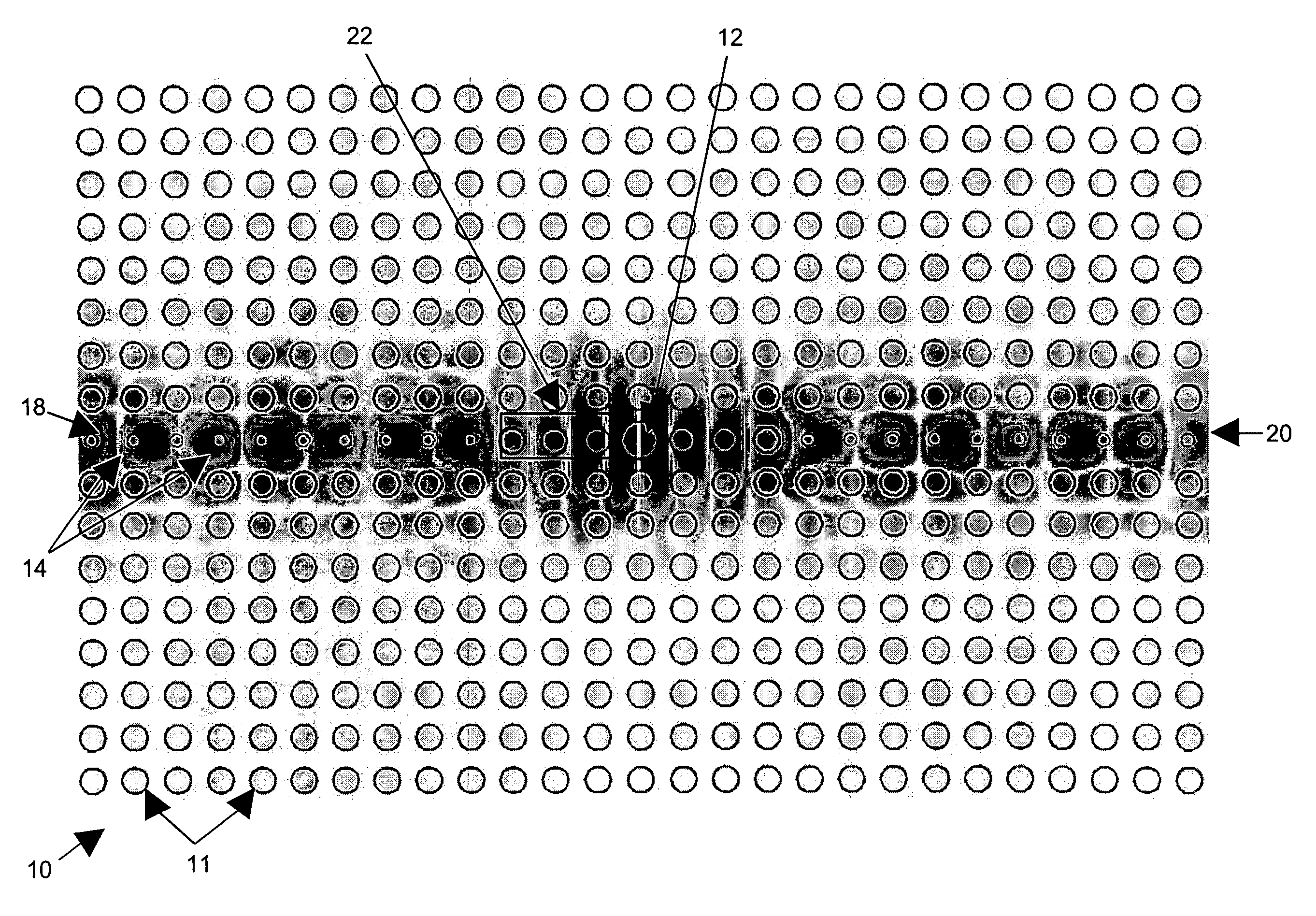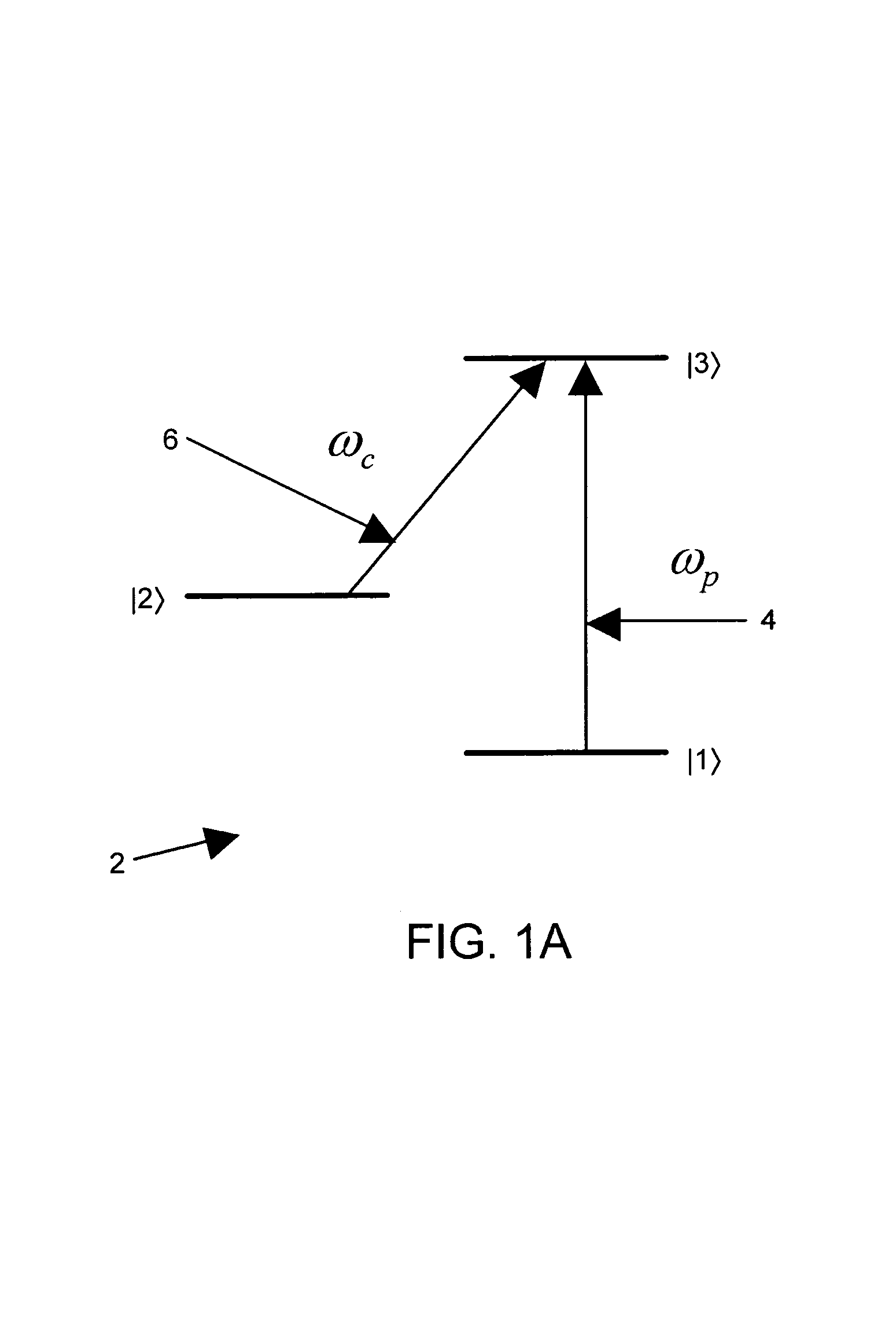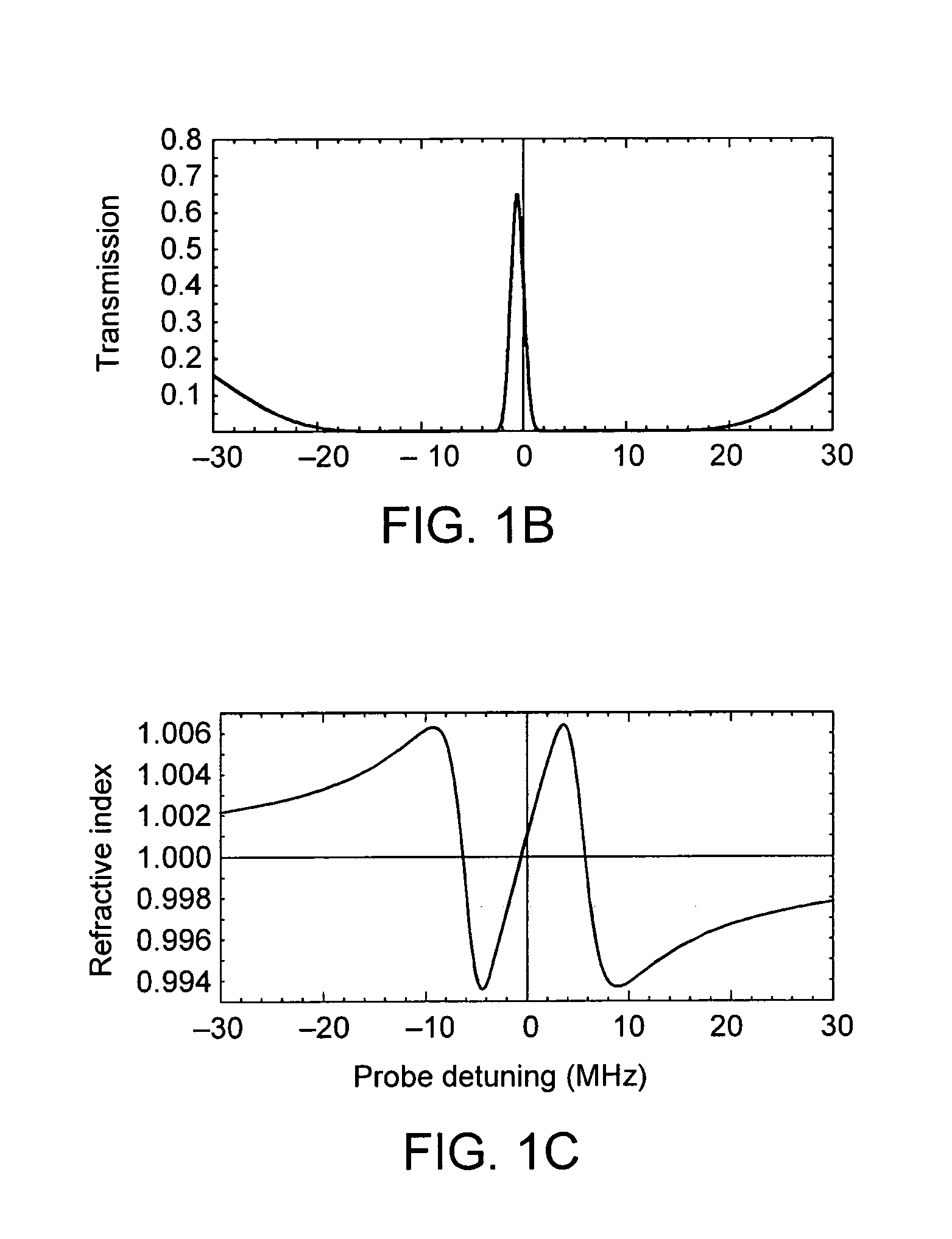Using electro-magnetically induced transparency in photonic crystal cavities to obtain large non-linear effects
a photonic crystal and electro-magnetically induced technology, applied in the field of solid-state-based electromagnetically induced transparency (eit), can solve the problems of increasing the power level of the long-haul network, affecting and almost 90% of the cost of any long-haul network is in the module that performs electro-optical conversion, so as to increase the non-linear properties of the photonic crystal and increase the non-linear properties of the photo
- Summary
- Abstract
- Description
- Claims
- Application Information
AI Technical Summary
Benefits of technology
Problems solved by technology
Method used
Image
Examples
Embodiment Construction
[0022]Photonic crystals are particularly suitable for implementation of various structural non-linearity enhancement schemes. Photonic crystals are artificially created materials in which index of refraction varies periodically between high-index and low-index values. Any light of wavelength comparable to the periodicity of the photonic crystal is not allowed to propagate inside it. In particular, photonic crystals have so-called photonic band-gaps; any light with frequency inside a bandgap is not allowed to propagate in the material, while the frequencies above and below the bandgap are allowed to propagate freely inside the crystal. This is reminiscent of electronic band-gaps for electrons propagating in semi-conductors. Photonic crystals therefore present for photons a material very similar to what semi-conductors present for electrons. Since semi-conductors led to integration of electronics, photonic crystals are considered to be the most promising candidate to enable large-scal...
PUM
| Property | Measurement | Unit |
|---|---|---|
| telecommunication power | aaaaa | aaaaa |
| power | aaaaa | aaaaa |
| induced transparency | aaaaa | aaaaa |
Abstract
Description
Claims
Application Information
 Login to View More
Login to View More - R&D
- Intellectual Property
- Life Sciences
- Materials
- Tech Scout
- Unparalleled Data Quality
- Higher Quality Content
- 60% Fewer Hallucinations
Browse by: Latest US Patents, China's latest patents, Technical Efficacy Thesaurus, Application Domain, Technology Topic, Popular Technical Reports.
© 2025 PatSnap. All rights reserved.Legal|Privacy policy|Modern Slavery Act Transparency Statement|Sitemap|About US| Contact US: help@patsnap.com



